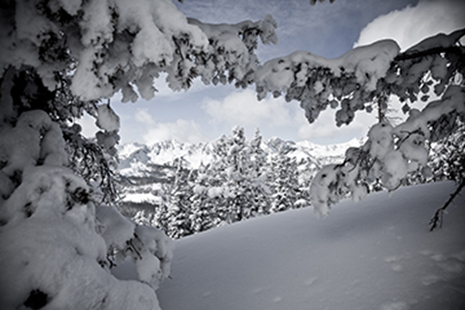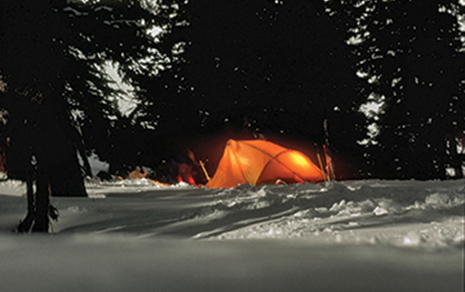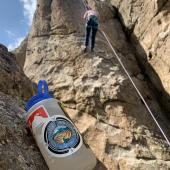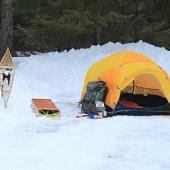Cold Fusion
A quick guide to winter backpacking.
by Steven Gnam
For those suffering from seasonal affective disorder, aka 90% of us in southwest Montana, going on a winter backpacking trip is a great way to combat the gray. Sharing the beauty that comes when individual snowflakes collectively transform a landscape into a masterpiece is unmatched; it's enough to shake anyone out of the winter blues.

Where To Go?
A major factor to consider when heading out is access. Some trailheads are sealed off miles from where a vehicle can go—at least a Subaru with only five inches of clearance. This definitely ups the solitude factor when going out. However, not all places are hard to access. In some areas, six feet of snow will cover over the brush and deadfall, making travel easier. The same trails used in summer are often starting points to head out into the winter backcountry.
Footwear
My first winter backpacking trip was in the Jewel Basin hiking area near Missoula. I was in high school and didn’t have boots at the time, so I put plastic bags over my socks and into my running shoes. Although it makes for a great story and really cold feet, I don’t recommend it. Warm boots and extra wool socks are a good start. Snowshoes and skis are good additions to help you stay on top of the snow, especially if you’re lugging a 50-pound pack, which is typical for winter backpacking trips—unless you can convince your friends to carry most of the gear.
Clothes
It’s colder, so dress warmer and pack extra clothing. Enough said.

Food
Part of the joy of winter backpacking is cooking up warm meals after a hard day of hiking. When your fingers are freezing and you’re complaining about eating burned stew off the bottom of the pan, remember, at least the food is warm and there are no bugs.
Water
Water in the winter is a lot like being on the ocean; you’re surrounded by it but there's not a drop to drink. Bring a stove to melt snow and ice or have a reliable stream nearby. Your body uses a lot of water in the winter, so stay on top of the hydration game.
At the Campsite
Number one rule—don’t camp in or below avalanche chutes. Second rule: guy out your tent well. ‘Guying’ refers to using line or accessory cord attached to points on your tent, which adds extra stability in high winds. Stakes don’t work well in snow, so attach guy lines to your tent and attach these to objects that you bury, such as rocks, stuff sacks filled with snow, trekking poles, or dead limbs from a tree. I also use a waterproof stuff sack to stash my boots in and then shove that in the tent or sleeping bag. Not only does this keep the snow off everything, but it also keeps the boots just above freezing so that you’re not wrestling with frozen boots for an hour in the morning. Some people (I call them lazy, they call themselves crafty) bring a pee-bottle for extremely cold trips so they can take care of things in the night without leaving a warm sleeping bag. Sorry ladies, you’re on your own here.

Getting Started
The best way to start winter backpacking is to go to an area you know and begin to expand your winter camping skills. You have the potential to go out all winter, never missing a beat and cruising into summer like backpacking is child’s play.









